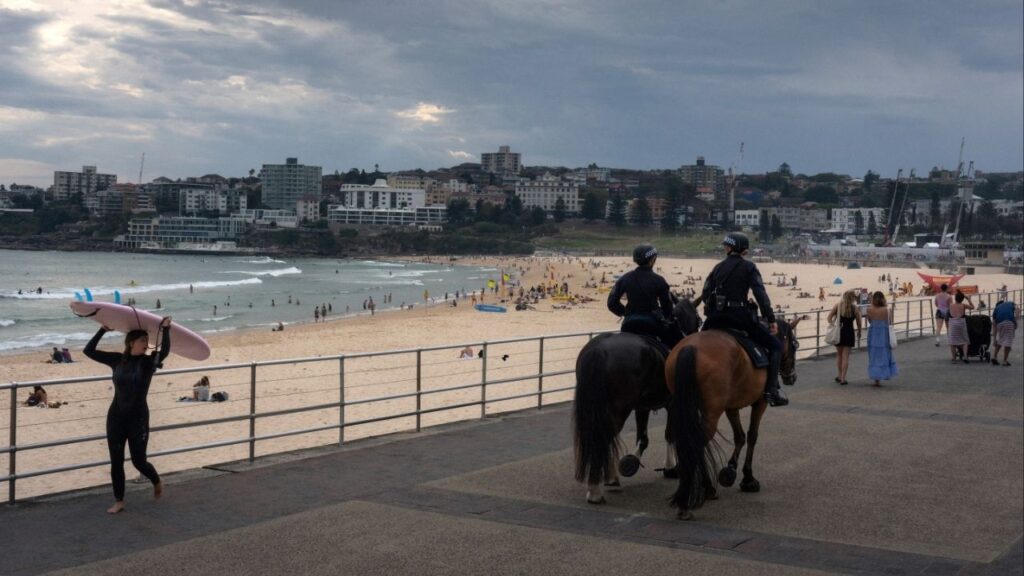Share
Whether you had a gold medal hanging from your neck, were just learning how to stand on a snowboard, or were one of those flustered skiers wondering where all the kids in the baggy pants were coming from, you knew the name “Burton.”
In an email sent to the staff at Burton, CEO John Lacy called Carpenter “our founder, the soul of snowboarding, the one who gave us the sport we love so much.”
Carpenter was not the inventor of the snowboard. But 12 years after Sherman Poppen tied together a pair of skis with a rope to create what was then called a “Snurfer,” the 23-year-old entrepreneur, then known only as Jake Burton, quit his job in Manhattan, moved back to Vermont and went about dreaming of how far a snowboard might take him.
“I had a vision there was a sport there, that it was more than just a sledding thing, which is all it was then,” Burton said in a 2010 interview with The Associated Press.
For years, Burton’s snowboards were largely snubbed at resorts — their dimensions too untested, their riders too unrefined, their dangers all too real — and many wouldn’t allow them to share the slopes with the cultured ski elite in Colorado or California or, heaven forbid, the Swiss Alps.
In 1998 the Olympics Got in on the Act
But those riders were a force of nature. And for all their risk-taking, rule-breaking, sidewinding trips down the mountain, they spent money, too. Throughout the last decade, snowboarders have accounted for more than 25% of visitors to mountain resorts in the United States. They have bankrolled a business worth more than $1 billion annually — a big chunk of which is spent on Burton gear.
“People take it for granted now,” said Pat Bridges, a longtime writer for Snowboarder Magazine, who has followed the industry for decades. “They don’t even realize that the name ‘Burton’ isn’t a company. It’s a person. Obviously, it’s the biggest brand in snowboarding. The man himself is even bigger.”
In 1998, and with Carpenter’s tacit blessing, the Olympics got in on the act, in hopes of injecting some youth into an older-skewing program filled with ski jumpers, bobsledders, figure skaters and hockey players.
As the years passed, Carpenter straddled the delicate line between the “lifestyle sport” he’d helped create — one that professed to value fun over winning, losing, money or Olympic medals — and the mass-marketing behemoth snowboarding was fast becoming.
“He saw himself as a steward to snowboarding,” Bridges said. “I’m not saying he was infallible, or that he always made the right choices. But at least that was always part of his calculus: ‘What impact is this decision going to have on snowboarding?’”
Though Burton is a private company that does not release financials, its annual sales were north of $500 million as of 2015. In addition to the hundreds of retail stores that sell the company’s merchandise, Burton has 30 flagship shops in America, 11 more in Europe and another 11 spread across the Pacific and Asia — a burgeoning market that Carpenter started developing a decade ago, during a time when the IOC was beginning the process of awarding three straight Winter Games to the continent.

Burton Sponsored Pretty Much Every Big Name in the Business
At a bar in Pyeongchang, South Korea, not far from where snowboarding celebrated its 20th anniversary at the Olympics last year, there was a wall filled with Burton pictures and memorabilia — as sure a sign as any of the global reach of a company that remains headquartered not far from where it was founded in Carpenter’s garage, in Londonderry, Vermont.
Burton sponsored pretty much every big name in the business at one time or another— from Seth Wescott to Shaun White, from Kelly Clark to Chloe Kim.
Indeed, it is virtually impossible to avoid the name “Burton” once the snow starts falling at any given mountain around the world these days. The name is plastered on the bottoms of snowboards, embroidered on jackets, stenciled into bindings and omnipresent in the shops around the villages.
The Burton U.S. Open, held each winter in Vail on a rider-friendly halfpipe traditionally recognized as the best on the circuit, remains a signature event on the snowboarding calendar.
“I had no clue whatsoever that you’d be building parks and halfpipes and that kind of thing,” Burton said in his 2010 interview, when asked about the reach his modest little snowboard had had over the decades. “We’re doing something that’s going to last here. It’s not like just hitting the lottery one day.”
Jake Had Died Peacefully
His final years were not the easiest.
Not long after being given a clean bill of health following his 2011 cancer diagnosis, Carpenter was diagnosed with a rare autoimmune disease, Miller Fisher Syndrome, that left him completely paralyzed for a short time.
After a long rehab, he was back on the mountain, and in 2018, he was standing near the finish line to watch White win his third Olympic gold medal.
“Jake embraced me and told me how proud he was of me and my career, and I’ll never forget that,” White said late Thursday in an Instagram post. “I will do what I can to help carry his legacy forward.”
This month, Carpenter sent an email to his staff: “You will not believe this, but my cancer has come back,” he said, while outlining his intention to fight the good fight.
Not two weeks later, Lacy sent out another email, notifying employees that Jake had died peacefully. The email included one, simple directive.
“I’d encourage everyone to do what Jake would be doing tomorrow, and that’s riding,” Lacy wrote. “It’s opening day at Stowe, so consider taking some turns together, in celebration of Jake.”
Categories

Fresno Underpass Closed Due to Flooding

















